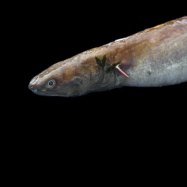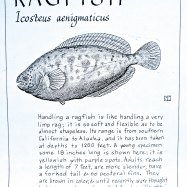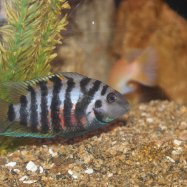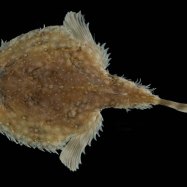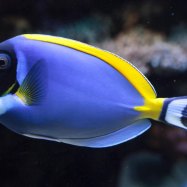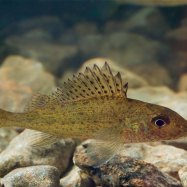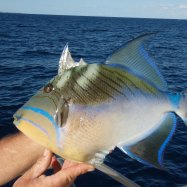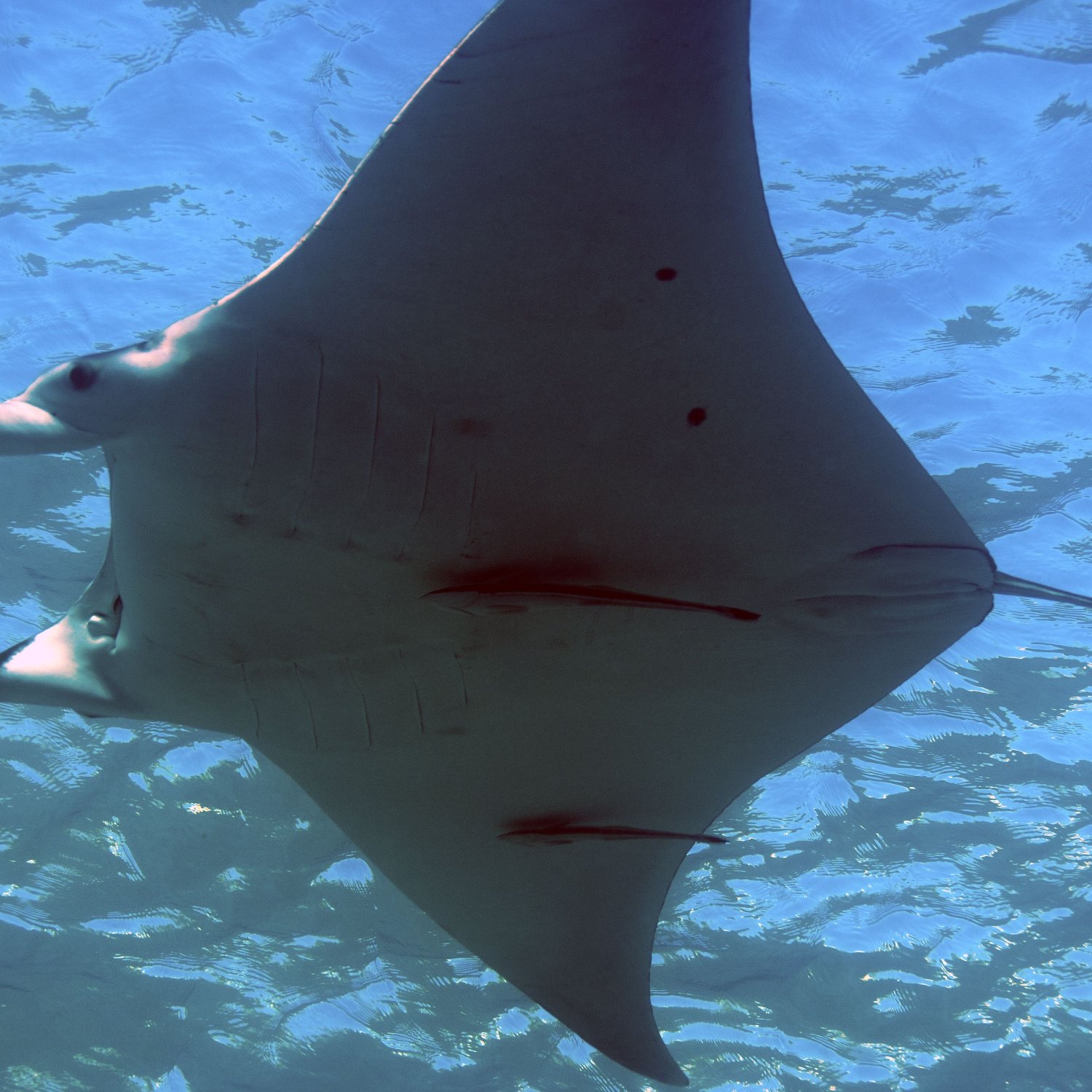
Manta Ray
Manta Rays are known to migrate long distances in search of food and suitable habitats.
Did you know? Manta Rays, also known as Devil Rays, are large fish that can migrate long distances in search of food and suitable habitats. Their lifespan is unknown, but they can live for several decades. These majestic creatures can be found in various countries and have a unique reproduction behavior, with a slow circular dance between males and females. #MantaRay #FishFact
Summary of Fish Details:
Common Name: Manta Ray
Habitat: Manta Rays are found in tropical and subtropical waters around the world. They prefer coastal areas, coral reefs, and open ocean habitats.
Color: The upper side of Manta Rays is generally dark in color, ranging from black to dark brown. The underside is lighter, usually white or pale gray.
The Fascinating World of Manta Rays: Discovering the Graceful Giants of the Sea
Manta Rays are one of the most captivating and awe-inspiring creatures found in the oceans. These magnificent animals have fascinated humans for centuries with their majestic appearance and graceful movements. From their unique body shape to their incredible hunting techniques, there is no denying that Manta Rays are truly one of a kind.Scientifically known as Mobula birostris, Manta Rays are also commonly referred to as "devilfish Manta Ray." They are found in tropical and subtropical waters around the world, and their preferred habitats include coastal areas, coral reefs, and open ocean regions. These gentle giants can reach incredible sizes, with some individuals reaching a wingspan of up to 23 feet.
Feeding and Habitat
Manta Rays are primarily filter feeders, meaning they feed on tiny organisms like plankton, small fish, and crustaceans. They do this by swimming through the surface and mid-water layers of the ocean, using their large, wing-like pectoral fins to guide plankton-rich water into their mouths. Manta Rays have a specialized filtration system called gill rakers, which helps them filter out tiny plankton from the water.
These elegant creatures are constantly on the move, searching for food and suitable habitats. They can often be found near productive ocean regions, such as upwellings and nutrient-rich areas, where large populations of plankton thrive. Manta Rays are also known to migrate long distances in search of food and suitable breeding grounds.
Geographic Distribution
Manta Rays have a wide geographic distribution and can be found in the Atlantic, Pacific, and Indian Oceans Mudskipper. They are commonly observed in tropical and subtropical waters, including the Caribbean Sea, Gulf of Mexico, Red Sea, and the Great Barrier Reef. Their distribution is not limited to a specific region, as they are capable of traveling vast distances.
Country of Origin
Manta Rays can be found in various countries, including Australia, Indonesia, Maldives, Mexico, Mozambique, Philippines, Thailand, and the United States. These countries are home to some of the world's most popular dive spots and are known for their diverse marine life, making them ideal habitats for Manta Rays.
Physical Appearance
The upper side of Manta Rays is generally dark in color, ranging from black to dark brown, while the underside is lighter, usually white or pale gray. This coloration helps them camouflage against the darkness of the open ocean when viewed from below and against the brighter surface when viewed from above. Manta Rays have a unique body shape that sets them apart from other marine animals. Their large, triangular pectoral fins resemble wings, giving them a distinct and graceful appearance.
Manta Rays have a wide, flat body with a short tail and no stinging spine. Their mouths, located on the front of their body, have two forward-facing "horns" or cephalic lobes, which are used to direct water into their mouths while feeding. They also have five gill slits on the underside of their body, which helps them breathe while swimming.
Size and Age
Manta Rays are known for their impressive size, with adult individuals reaching a wingspan of up to 23 feet. The largest recorded Manta Ray had a wingspan of 29 feet, making it the largest ray species in the world. However, determining the exact size of these elusive creatures can be challenging as they are constantly moving and difficult to measure accurately. The lifespan of Manta Rays is currently unknown, but it is estimated that they can live for several decades.
Reproduction and Behavior
Manta Rays reproduce through internal fertilization and give birth to live young. During mating, male Manta Rays will chase females and attempt to bite or grip their pectoral fins. Once the female accepts the male, they will engage in a slow circular dance, swimming together in a spiral pattern. This courtship behavior can last for several hours, and it is believed to be a way for males to show their strength and dominance to the female.
Manta Rays are known for their curious and gentle nature, and they often display a playful behavior towards humans. They are not known to be aggressive towards divers and snorkelers and will often swim close by, providing an unforgettable encounter for those lucky enough to see them.
Threats and Conservation Efforts
Despite their gentle nature, Manta Rays are facing a multitude of threats, including overfishing, shark finning, and plastic pollution. In many cultures, Manta Rays are hunted for their meat, gill rakers, and fins, which are believed to have medicinal properties. These unsustainable practices have led to a significant decline in Manta Ray populations globally, and they are now listed as vulnerable by the International Union for Conservation of Nature (IUCN).
Thankfully, there are ongoing efforts to protect and conserve Manta Rays, including the establishment of marine protected areas, educational campaigns, and stricter fishing regulations. Many countries have also implemented laws and regulations to ban the hunting and trade of Manta Rays and their body parts. These conservation efforts are vital to ensure the survival of these incredible creatures for future generations.
In conclusion, Manta Rays are truly fascinating creatures with a wide geographic distribution and a unique set of characteristics. From their graceful movements to their impressive size, these gentle giants never fail to capture the hearts of divers and ocean enthusiasts. However, it is essential to remember that these creatures are vulnerable and need our protection to survive. By educating ourselves and others about the importance of conservation, we can ensure that the home of these magnificent animals remains safe and thriving for years to come. So next time you have the opportunity to encounter a Manta Ray, take a moment to appreciate their beauty and let it inspire you to join the efforts to protect them and their precious ocean habitats.

Manta Ray
Fish Details Manta Ray - Scientific Name: Mobula birostris
- Category: Fish M
- Scientific Name: Mobula birostris
- Common Name: Manta Ray
- Habitat: Manta Rays are found in tropical and subtropical waters around the world. They prefer coastal areas, coral reefs, and open ocean habitats.
- Feeding Habitat: Manta Rays feed in surface and mid-water layers of the ocean.
- Feeding Method: They are filter feeders, using their large, wing-like pectoral fins to direct plankton-rich water into their mouths. They have a specialized filtration system called gill rakers that help them filter out tiny plankton from the water.
- Geographic Distribution: Manta Rays have a wide geographic distribution and can be found in the Atlantic, Pacific, and Indian Oceans. They are commonly found in tropical and subtropical waters, including the Caribbean Sea, Gulf of Mexico, Red Sea, and Great Barrier Reef.
- Country Of Origin: Manta Rays can be found in various countries including Australia, Indonesia, Maldives, Mexico, Mozambique, Philippines, Thailand, and the United States.
- Color: The upper side of Manta Rays is generally dark in color, ranging from black to dark brown. The underside is lighter, usually white or pale gray.
- Body Shape: Manta Rays have a unique body shape characterized by their large, triangular pectoral fins, which resemble wings. They have a wide, flat body with a short tail and no stinging spine.
- Length: Manta Rays can grow up to 23 feet (7 meters) in width.
- Adult Size: Adult Manta Rays can reach a wingspan of up to 23 feet (7 meters). The largest recorded Manta Ray had a wingspan of 29 feet (8.8 meters).
- Age: The lifespan of Manta Rays is currently unknown, but it is estimated that they can live for several decades.
- Reproduction: Manta Rays reproduce through internal fertilization and give birth to live young.
- Reproduction Behavior: During mating, male Manta Rays will chase the female and attempt to bite or grip her pectoral fin. Once the female accepts the male, they will engage in a slow circular dance, swimming together in a spiral pattern.
- Migration Pattern: Manta Rays are known to migrate long distances in search of food and suitable habitats.
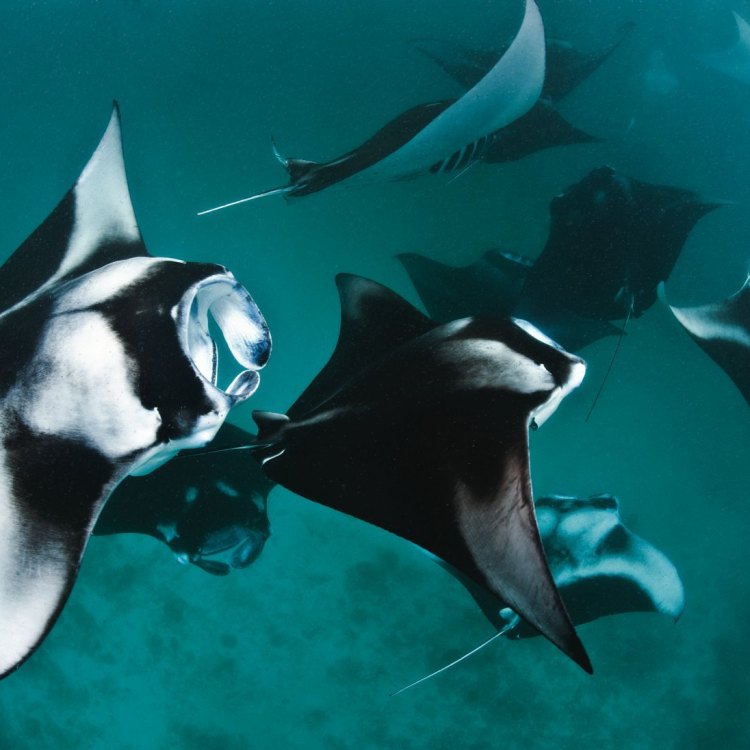
Manta Ray
- Social Group: Manta Rays are usually solitary animals, but they can sometimes be found in small groups called aggregations.
- Behavior: Manta Rays are gentle and curious creatures. They are known for their acrobatic behavior, often leaping out of the water, somersaulting, and slapping their fins on the surface.
- Diet: Manta Rays primarily feed on tiny plankton, such as copepods, krill, and small fish.
- Predators: Manta Rays have few natural predators due to their large size and tough skin. However, they may be preyed upon by large sharks, killer whales, and humans.
- Prey: The main prey of Manta Rays is plankton, including copepods, krill, and small fish.
- Environmental Threats: Manta Rays face various environmental threats, including habitat degradation, pollution, entanglement in fishing gear, and overfishing for their gill plates, which are used in traditional Chinese medicine.
- Conservation Status: Manta Rays are currently listed as vulnerable by the International Union for Conservation of Nature (IUCN). They are protected in several countries, and international trade of Manta Ray products is regulated under the Convention on International Trade in Endangered Species of Wild Fauna and Flora (CITES).
- Special Features: One of the key features of Manta Rays is their large, triangular pectoral fins, which can span up to 23 feet (7 meters) in width. These fins give them the appearance of flying through the water. Manta Rays also have unique markings on their undersides, which can be used to identify individuals.
- Interesting Facts: 1. Manta Rays are one of the largest fish in the ocean, but they primarily feed on some of the smallest organisms, plankton. 2. They are closely related to sharks, belonging to the same group of cartilaginous fishes called Elasmobranchs. 3. Manta Rays have a unique feeding behavior called 'barrel rolling,' where they somersault while feeding to maximize their efficiency in capturing plankton. 4. Despite their large size, Manta Rays are harmless to humans and are known for their curiosity towards divers. 5. Manta Rays have one of the highest brain-to-body ratios of all fish, suggesting their high intelligence and cognitive abilities.
- Reproduction Period: The exact reproduction period of Manta Rays is not well-documented, but it is believed that mating and breeding occur throughout the year.
- Nesting Habit: Manta Rays do not build nests. After mating, the female Manta Ray will give birth to live young called pups. The pups are born fully developed and capable of swimming on their own.
- Lifespan: The lifespan of Manta Rays is currently unknown, but they are believed to live for several decades.
- Habitat Threats: The major threats to the habitat of Manta Rays include habitat degradation from coastal development, pollution, and the effects of climate change, such as ocean acidification and rising sea temperatures.
- Population Trends: Population trends of Manta Rays are largely unknown due to limited data. However, studies suggest that global populations are declining due to various threats.
- Habitats Affected: Manta Rays are affected by the degradation of coral reefs, which are essential habitats for them. They also inhabit coastal habitats that are susceptible to human impacts and pollution.

Mobula birostris
The Enigmatic Beauty of the Manta Ray: Understanding Its Unique Features and the Need for Conservation
The ocean is a vast and mysterious world that is home to some of the most fascinating and enigmatic creatures. Among them is the Manta Ray, a majestic and gentle giant that roams the seas with grace and elegance. With its large, triangular pectoral fins, curious behavior, and distinctive markings, the Manta Ray is a creature that has captured the imaginations of many and continues to intrigue scientists and marine enthusiasts alike.In this article, we will delve into the unique features of the Manta Ray, from its social behavior to its role in the marine ecosystem RadioDouRosul.com. We will also explore the environmental threats that this magnificent creature faces and the importance of its conservation.
Social Group of Manta Rays
Manta Rays are known to be solitary animals, preferring to roam the ocean alone in search of food. However, they can also be found in small groups, known as aggregations. These aggregations may consist of up to 50 individuals, and they usually occur around rich feeding grounds.
The behavior of Manta Rays is intriguing and often leaves observers in awe. They are known for their acrobatic leaps out of the water, somersaulting, and slapping their fins on the surface. Scientists believe that this behavior serves several purposes, including communication, feeding, and possibly courtship displays.
Diet and Predators
Manta Rays have a diverse diet, primarily consisting of tiny plankton, including copepods, krill, and small fish. They are filter feeders, meaning they use their gill rakers to filter out their food from the water as they swim Mud Minnow.
Due to their large size and tough skin, Manta Rays have few natural predators. However, they may be preyed upon by large sharks, killer whales, and unfortunately, humans.
Environmental Threats
Despite their seemingly invincible status, Manta Rays are facing various environmental threats that put their survival at risk. One of the biggest threats they face is habitat degradation. Coastal development, pollution from human activities, and the destruction of coral reefs, where they feed, can lead to a decline in their populations.
Moreover, Manta Rays are also at risk of entanglement in fishing gear. This can lead to injuries and death, significantly impacting their populations. Additionally, Manta Rays are overfished for their gill plates, which are used in traditional Chinese medicine. This practice has resulted in significant population declines in some areas.
Conservation Status and Efforts
Currently, Manta Rays are listed as vulnerable by the International Union for Conservation of Nature (IUCN). They are protected in several countries, and international trade of Manta Ray products is regulated under the Convention on International Trade in Endangered Species of Wild Fauna and Flora (CITES).
Efforts are also being made to protect their habitat and reduce the impact of human activities, such as pollution and overfishing. Several organizations, including the Manta Trust and Project AWARE, are working towards the conservation of Manta Rays through research, education, and advocacy.
Special Features of Manta Rays
One of the most distinctive features of Manta Rays is their large, triangular pectoral fins. These fins can span up to 23 feet (7 meters) in width, giving them a graceful and almost ethereal appearance as they glide through the water.
Their pectoral fins are not only for movement but also serve as powerful tools for feeding. Manta Rays have a unique feeding behavior called 'barrel rolling,' where they somersault while feeding to maximize their efficiency in capturing plankton. This allows them to capture more food while using less energy.
Another unique feature of Manta Rays is the markings on their undersides. These markings are unique to each individual and can be used to identify them, much like a human fingerprint. This has been crucial in research and conservation efforts as it helps scientists track and monitor Manta Ray populations in the wild.
Interesting Facts About Manta Rays
In addition to their remarkable features, Manta Rays also have some interesting facts that make them even more intriguing:
1. Manta Rays are one of the largest fish in the ocean, with a wingspan that can reach up to 29 feet (9 meters).
2. Despite their massive size, Manta Rays feed on some of the smallest organisms in the ocean, plankton.
3. They are closely related to sharks, belonging to the same group of cartilaginous fishes called Elasmobranchs.
4. Manta Rays have a high brain-to-body ratio, suggesting a higher intelligence and cognitive abilities compared to other fish.
5. Despite their size, Manta Rays are harmless to humans. In fact, they are known for their curiosity towards divers and have been observed interacting with them in the water.
Reproduction and Lifespan
The exact reproduction period of Manta Rays is not well-documented, and it is believed that mating and breeding occur year-round. However, studies suggest that females give birth to their young, called pups, every two to five years.
Unlike other fish, Manta Rays do not lay eggs. Instead, after mating, the female Manta Ray will give birth to live young, usually one or two pups. The pups are born fully developed and capable of swimming on their own, but they will stay close to their mother for protection and nourishment for some time.
The lifespan of Manta Rays is still unknown, but they are believed to live for several decades. It is difficult to determine their exact lifespan as they are elusive and migratory creatures, making it challenging to study them in the wild.
Threats to their Habitat
The habitat of Manta Rays is crucial to their survival. They rely on coral reefs, which are vital feeding grounds, for their food. Unfortunately, coral reefs are under threat from climate change, including ocean acidification and rising sea temperatures. These changes can destroy or degrade coral reefs, making it challenging for Manta Rays to find food and survive.
Moreover, as coastal development expands, so does pollution and the impacts of human activities on coastal habitats. This puts additional pressure on Manta Rays as they rely on these habitats for feeding, breeding, and shelter.
Population Trends and Affected Habitats
Due to limited data, population trends of Manta Rays are largely unknown. While some populations seem to be stable, others are declining, and many are considered vulnerable or endangered.
Manta Rays are most commonly found in tropical and subtropical regions, including the Pacific, Indian, and Atlantic Oceans. They are also found in both shallow and deep waters, making it difficult to determine their exact population size and trends.
Besides coral reefs, Manta Rays also inhabit coastal habitats that are susceptible to human impacts and pollution. This is due to their need for shallow waters for feeding and their habit of following ocean currents, which may lead them to coastal areas.
In conclusion, the Manta Ray is a magnificent and fascinating creature that plays a vital role in the marine ecosystem. Unfortunately, they face various environmental threats that put their survival at risk. Through conservation efforts and awareness, we can ensure the protection of these gentle giants and preserve the beauty of our oceans for generations to come. Let us appreciate and cherish the enigmatic beauty of the Manta Ray and work towards its conservation and protection.
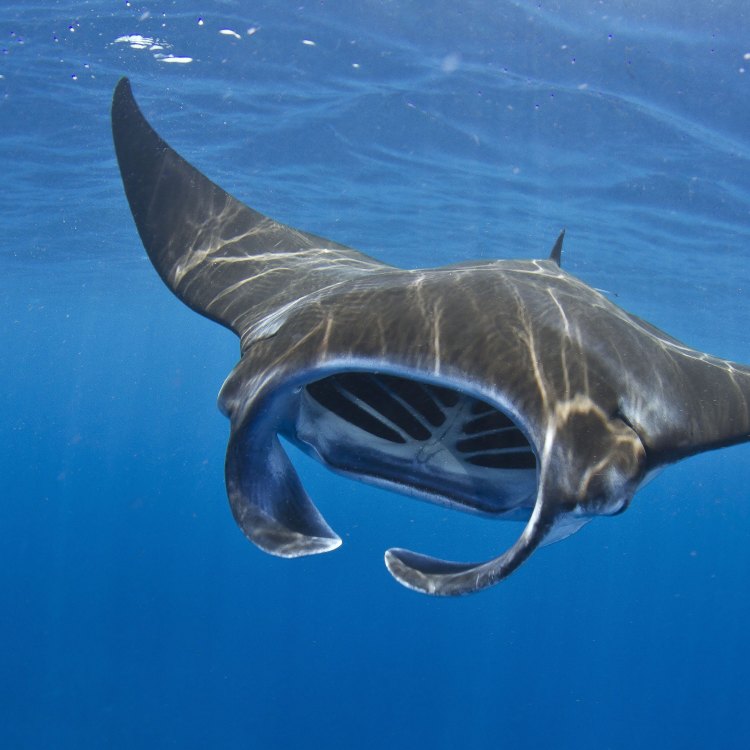
The Fascinating World of Manta Rays: Discovering the Graceful Giants of the Sea
Disclaimer: The content provided is for informational purposes only. We cannot guarantee the accuracy of the information on this page 100%. All information provided here may change without prior notice.

